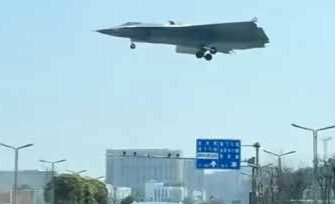The Royal Navy is set to launch its largest maritime force of combat jets since the Falklands War, signaling a renewed commitment to global security and trade.
In the coming weeks, HMS Prince of Wales, the Royal Navy’s flagship, will depart Portsmouth as the centerpiece of a powerful strike group. This deployment will include warships, support vessels, an attack submarine, and a significant contingent of aircraft – marking a substantial demonstration of British military strength.
The carrier itself will carry up to 24 fifth-generation F-35B stealth jets, representing the most extensive maritime deployment of British military jets in over four decades. Complementing these jets will be a dozen Merlin, Wildcat, and Chinook helicopters, alongside a squadron of unmanned aerial vehicles (UAVs).
This mission marks a milestone for the UK military as it incorporates UAV technology into operational deployments; HMS Prince of Wales will carry nine octo-copters tasked with transporting essential supplies—mail, engineering components, and smaller items—between vessels within the strike group.
Dubbed “Operation Highmast,” this eight-month deployment will involve approximately 2,500 Royal Navy personnel and 592 from the Royal Air Force. The strike group will initially convene off the coast of Cornwall before embarking on a journey encompassing the Mediterranean Sea and the Indian Ocean.
Key objectives for Operation Highmast include:
- Conducting joint exercises with partner nations.
- Engaging in port visits to strengthen international relationships.
The deployment will see collaboration with several countries, including:
- United States
- India
- Singapore
- Malaysia
Furthermore, 900 personnel from the British Army will participate in exercises throughout the mission.
The Indo-Pacific region is of paramount importance to the UK economy, with trade valued at over £286 billion last year. The deployment underscores the UK’s commitment to maintaining stability and fostering economic growth within this critical area.
Defence Secretary John Healey stated: “I want to thank the thousands of our Armed Forces personnel involved in the delivery of this immensely complex operation, demonstrating the UK’s world-leading capability to deploy a major military force around the world.”
He continued, “This is a unique opportunity for the UK to operate in close coordination with our partners and allies in a deployment that not only shows our commitment to security and stability, but also provides an opportunity to bolster our own economy and boost British trade and exports. As one of only a handful of countries in the world able to lead a deployment of this scale, the Royal Navy is once again demonstrating its formidable capability while protecting British values and sending a powerful message of deterrence to any adversary.”
The operation benefits from international support; twelve nations are contributing resources. Norway will provide a warship and logistics vessel for the duration of the deployment, while Canada and Spain will dispatch frigates.
Initially operating under NATO command, the carrier group will participate in an exercise designed to test the Alliance’s ability to execute high-end maritime strike capabilities involving multiple aircraft carriers and amphibious groups. Following this engagement, the group will transit through the Indian Ocean, conducting exercises and port calls before joining 19 other nations for a major training event near Australia.
Training alongside Japan’s defense forces is also planned, as well as a port visit to India.
On April 22nd, thousands of family members are expected to gather in Portsmouth to bid farewell to HMS Prince of Wales and the crew embarking on this significant mission.


